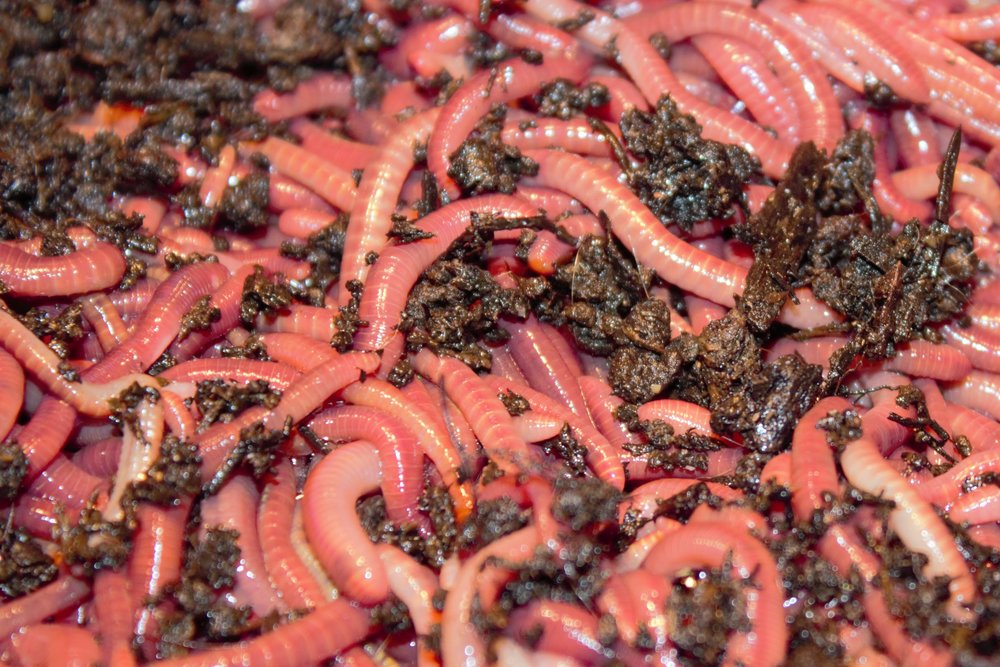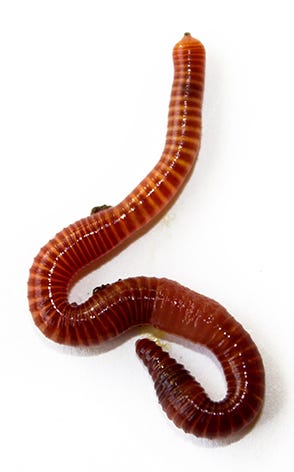Great red worms: Why they matter for gardens
Great red worms: Why they matter for gardens
Blog Article
Everything You Need to Learn About Red Wigglers for Composting
Red wigglers, or Eisenia fetida, play a pivotal role in the world of composting, changing natural waste right into important dirt modifications. Their unique biological characteristics allow them to grow in different problems, making them a perfect option for both novice and skilled composters alike. Comprehending their needs and advantages is crucial for establishing an efficient vermicomposting system. Nonetheless, the procedure of establishing a worm container and keeping it can posture obstacles. To successfully harness the possibility of these worms, one have to discover the details of their treatment and monitoring.
What Are Red Wigglers?

(Lake James Worms)
Indigenous to The United States and copyright, red wigglers are surface-dwelling organisms that like moist, warm environments abundant in decaying natural issue. Their diet plan consists primarily of decaying plant product, food scraps, and various other organic debris, which they consume and damage down successfully. As they digest this material, they produce nutrient-rich spreadings that improve soil fertility.
Red wigglers are hermaphroditic, having both male and female reproductive body organs, and can reproduce rapidly under optimum conditions. Generally, red wigglers are vital contributors to the procedure of recycling organic waste right into beneficial compost.
Benefits of Making Use Of Red Wigglers
Utilizing red wigglers in composting systems uses countless advantages that enhance both the effectiveness of waste monitoring and the quality of the resulting compost. These worms, clinically called Eisenia fetida, are particularly effective at breaking down raw material, transforming kitchen scraps and yard waste into nutrient-rich compost at a sped up price.
Among the primary benefits of using red wigglers is their capability to take in big amounts of natural product, often processing their weight in food waste daily. This high consumption rate results in quicker decay and minimizes the quantity of waste sent out to land fills. In addition, the spreadings generated by red wigglers are rich in important nutrients, useful bacteria, and enzymes, making them an exceptional plant food for gardens and plants.
Additionally, red wigglers grow in a selection of settings, making them versatile for both indoor and outdoor composting systems - red wigglers. Their presence in a compost container assists to aerate the material, preventing smells and advertising a healthy composting process. Overall, using red wigglers not just contributes to effective waste management yet likewise supports sustainable horticulture techniques with the production of high-quality garden compost
(Lake James Worms)
Establishing Your Worm Bin
To successfully establish a worm container, it is necessary to choose a suitable container that satisfies the requirements of red wigglers while giving a conducive environment for composting. An appropriate bin can be made from plastic, timber, or steel, with an ability of a minimum of 1 square foot for every pound of worms.
Guarantee the container has ample water drainage openings to stop excess moisture, as red wigglers thrive in a damp, but not waterlogged, environment. red wigglers. The bin should also be ventilated to provide sufficient airflow, preventing anaerobic conditions that could harm the worms
An ideal area for the worm container is a trendy, dark location, without straight sunshine and severe temperatures, as red wigglers like a temperature variety of 55 to 77 degrees Fahrenheit.
Before presenting the worms, prepare bedding products such as shredded paper, cardboard, or coconut coir, which will certainly supply both habitat and food. Moisten the bed linens gently to develop a welcoming environment for the worms. Consider positioning a lid on the bin to keep humidity and reduce parasites, while guaranteeing it can be quickly removed for upkeep.
Feeding and Care Standards
Feeding red wigglers is a critical element of maintaining a healthy and balanced composting system. These worms prosper on a diverse diet regimen, mainly made up of natural materials such as fruit and veggie scraps, coffee grounds, and smashed eggshells. It is vital to prevent feeding them meat, dairy, and oily foods, as these can produce unpleasant odors and draw in pests.
When presenting food to your worm bin, slice or shred materials right into smaller sized pieces to facilitate quicker decay. Start with little quantities to evaluate the worms' intake rate, progressively enhancing the amount as they adjust. It is a good idea to alternative feeding places within the container to encourage complete blending and aeration of the garden compost.

Troubleshooting Common Issues
Preserving a prospering worm composting system can often provide difficulties that need attention and troubleshooting. Common concerns consist of an Raleigh Worm Farms undesirable smell, which commonly suggests overfeeding or the existence of anaerobic conditions. To correct this, minimize the amount of food added and ensure proper oygenation by mixing the bedding product.
An additional regular problem is the retreat of worms from the container. This can occur due to too much wetness or inappropriate ecological problems. Frequently check the wetness levels, intending for a moist but not soaked consistency, and maintain optimum temperature levels between 60-80 ° F(15-27 ° C )to create a comfy habitat for your red wigglers.
Parasites, such as fruit flies, can additionally invade worm containers. red wigglers. To fight this, cover food scraps with a layer of bedding or shredded paper to prevent flies from laying eggs. Additionally, make certain that any type of food included is fresh and devoid of mold and mildew, which can draw in unwanted parasites
Finally, if your worms appear inactive, look for tension variables such as temperature variations or inadequate wetness. Addressing these usual issues will certainly aid preserve a healthy and balanced and productive worm composting system.
Final Thought
In summary, red wigglers, or Eisenia fetida, play a crucial duty in sustainable waste administration via vermicomposting. Their ability to successfully transform organic waste right into nutrient-dense spreadings improves dirt wellness and promotes plant growth. Correct setup and maintenance of a worm bin, in addition to adherence to feeding standards, guarantee a successful ecological community that minimizes garbage dump payments. Resolving usual issues quickly additionally sustains the effectiveness of this ecological method, adding to ecological sustainability and farming performance.
Report this page